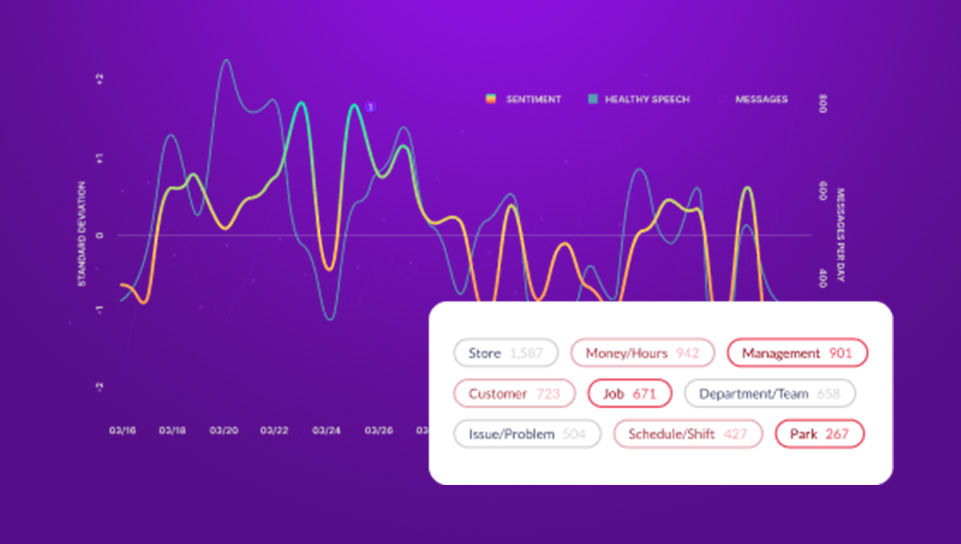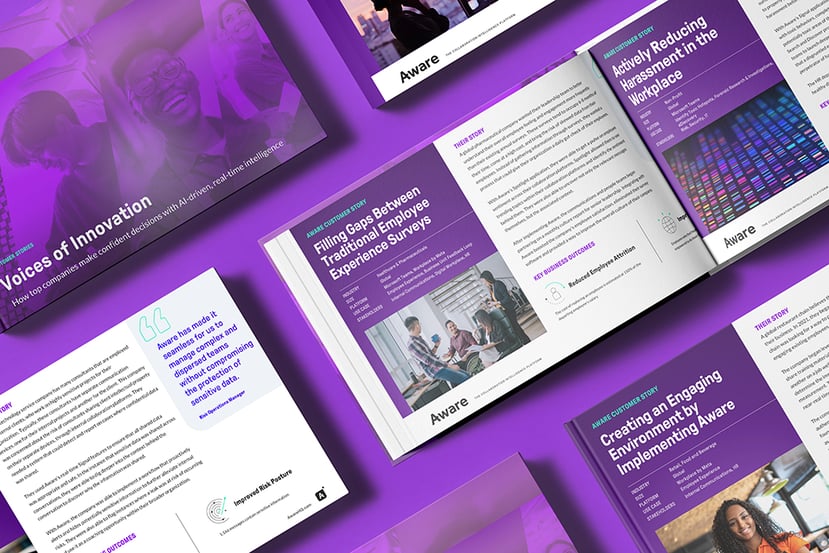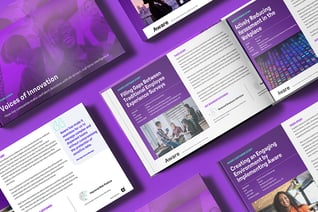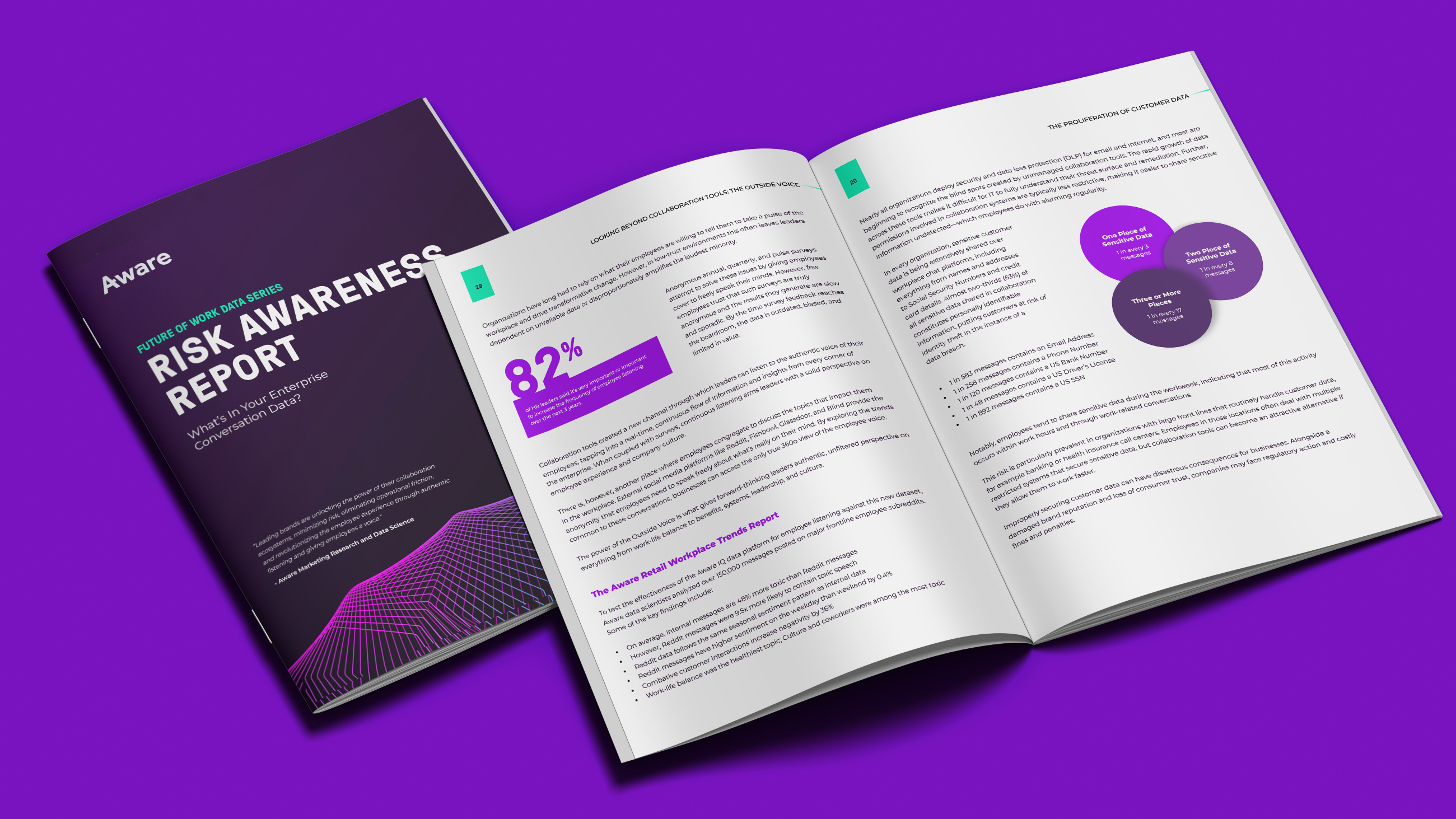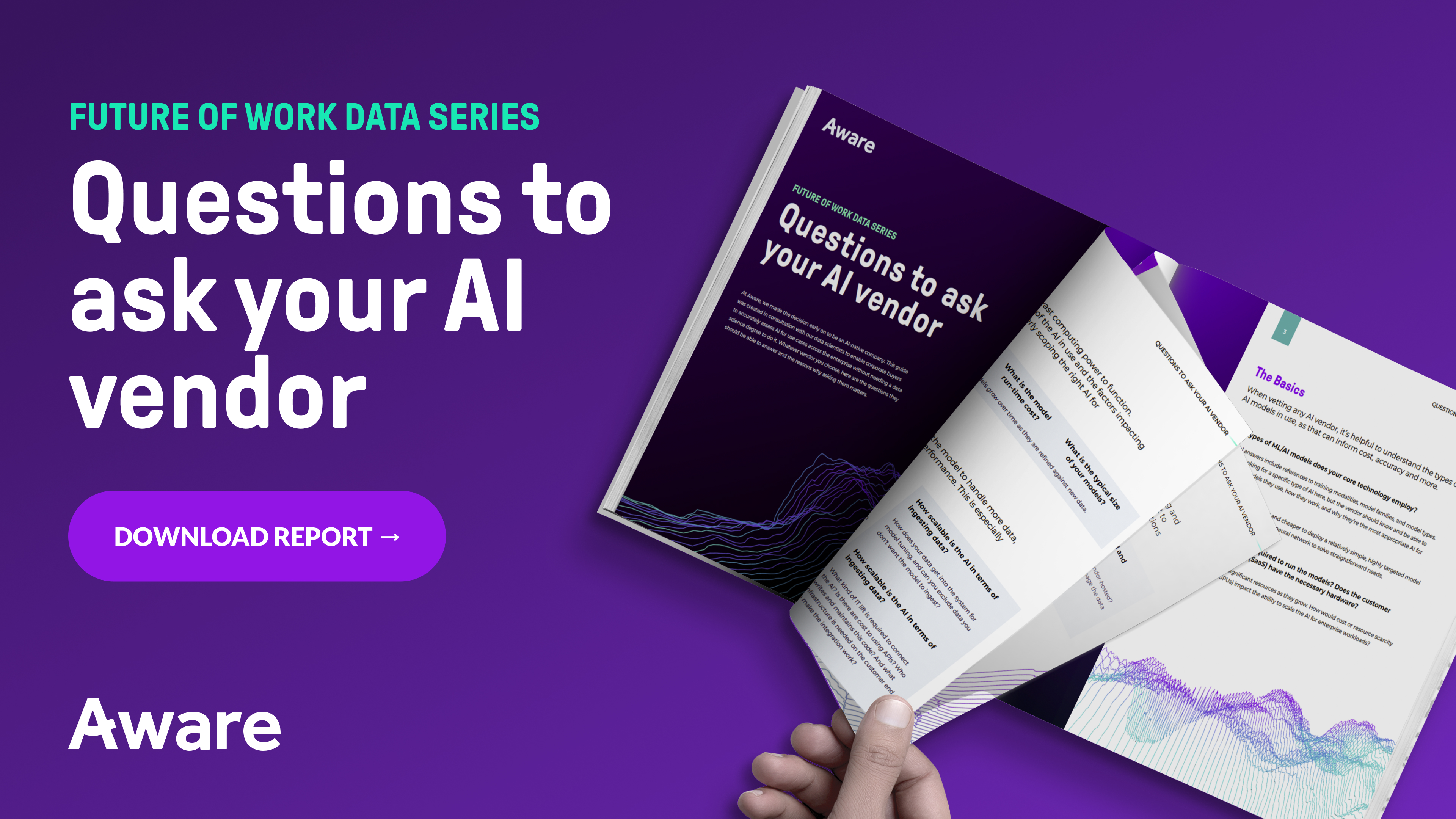How Can AI and ML Supercharge eDiscovery in Collaboration?
by Aware
Digital workplace tools like Slack, Microsoft Teams, and Google Drive have created an exponentially growing dataset of collaboration messages that make the job of performing eDiscovery more complex by the day. New technologies, powered by artificial intelligence (AI) and machine learning (ML) capabilities, can significantly enhance eDiscovery and transform the way legal professionals uncover, review, and manage electronic evidence.
Contents
- How AI/ML technology can improve eDiscovery
- What are the advantages of using AI in eDiscovery?
- Key points to consider when leveraging AI in eDiscovery
- AI for eDiscovery FAQs
- What is the difference between AI and ML?
- How do AI and ML work together?
- Can ML and AI be used together in eDiscovery?
- How are ML and AI used for automation?
- What are the challenges of using AI and ML in eDiscovery?
- What are the benefits of ML and AI in eDiscovery?
- What are the limitations of AI and ML at scale?
- Aware: AI/ML-powered eDiscovery built for enterprises
How AI/ML technology can improve eDiscovery
The process of electronic discovery faces challenges in three key areas: data preservation, collection, and review. These challenges are exacerbated by collaboration tools, whose functionality is designed about giving users as much freedom and control as possible. Apps like Slack and Teams are filled with hidden and private channels, direct chats, and edited and deleted messages that can be difficult—if not impossible—for legal officers to recover.
Aware research shows that:
- 1 in 53 messages are edited or deleted
- Two-thirds of collaboration messages are sent in DMs
- Just 9% of messages occur in public channel
Artificial intelligence and machine learning technologies can simplify and accelerate eDiscovery for ESI in collaboration tools, helping leaders to overcome the unique challenges and complexities they present at every stage of the process.
Translating Foreign Text to remove language barriers, making documents accessible to non-native speakers.
Conversation Threading helps to reconstruct conversations and understand the context of messages.
Identifying Entities such as names, locations, and organizations, aiding in the extraction of crucial information.
Anonymization and Identity Masking protects sensitive data by automatically anonymizing and masking identities.
Clustering groups similar documents together, simplifying the review process by allowing legal professionals to examine multiple documents at once.
Technology-Assisted Review (TAR) accelerates the review process by identifying relevant documents and reducing the need for human review.
Sentiment Analysis helps identify the tone and context of communications, indicating areas of increased anger, toxicity, and frustration.
Related: the eDiscovery gap you're not thinking about, where context is king
What are the advantages of using AI in eDiscovery?
The capabilities of AI technology to identify, collect, and sort information make it invaluable for legal teams looking to expedite the management of large caseloads. This is especially true when working with complex datasets like modern collaboration tools. Teams can realize significant cost savings at every stage of the eDiscovery process by taking a targeted, streamlined approach to data management that reduces extraction, storage, and processing demand and cuts down on time-consuming manual reviews.
In addition to lower costs, AI can help eDiscovery leaders to pinpoint critical data and quickly analyze it at volume, improving accuracy, eliminating human error, and accelerating timeframes. AI/ML tech can also help to ensure fairer reviews, minimizing the bias and inconsistency common to manual approaches. Finally, the automation of routine tasks in eDiscovery, such as document sorting and prioritization, allows legal professionals to focus on more complex and strategic aspects of the legal proceedings, ultimately increasing overall productivity.
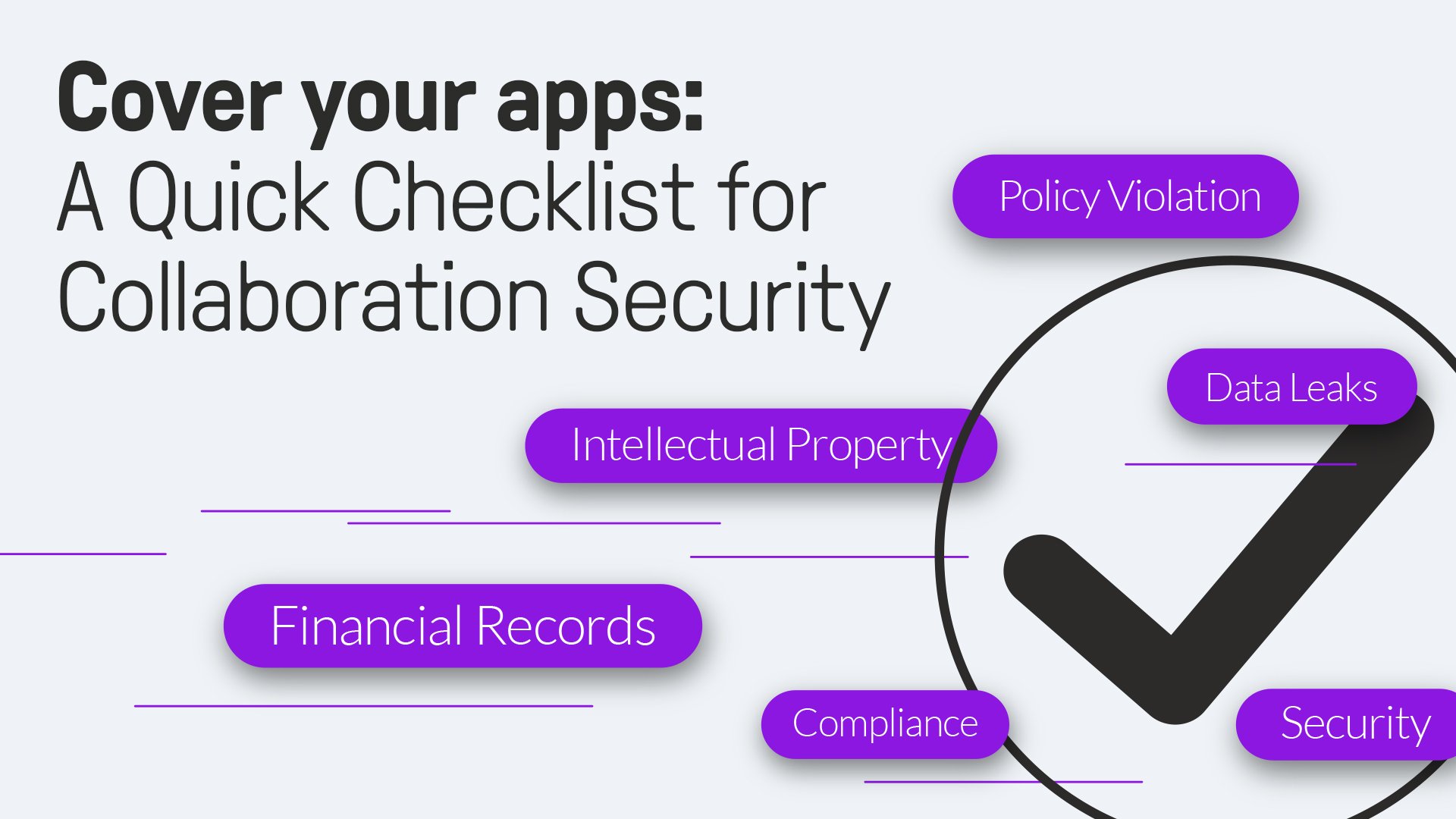
Download the guide and cover your collaboration apps today.
Key points to consider when leveraging AI in eDiscovery
Not all AI is created equal so getting the most from investments in new technology means considering how to approach AI tools and the best ways to incorporate them into existing eDiscovery workflows. Key points to consider include:
- Does the purpose match the intent? For example, TAR tools work primarily on text-based datasets, making them less useful for teams dealing with primarily image-based data.
- How is data protected? Ensure your sensitive data is kept secure throughout the entire lifecycle.
- How was the AI trained? Without understanding the training methodology, you can’t be sure of the accuracy of the outputs.
- What quality controls are in place? Users should be able to provide feedback on results to improve performance and accuracy.
AI for eDiscovery FAQs
What is the difference between AI and ML?
Artificial intelligence (AI) is a broad term for a computer’s ability to perform actions normally associated with human intelligence—activities like analysis, reasoning, and learning from experience. Machine learning models (ML) are a subset of AI that involve training computers to learn from large amounts of data and make predictions or decisions.
How do AI and ML work together?
AI is a broad term for an overarching framework or platform. ML models analyze data and make predictions or decisions based on patterns and trends. An AI platform may contain many different ML models.
Can ML and AI be used together in eDiscovery?
Yes, AI/ML can be used to enhance eDiscovery processes by automating tasks, improving search, and providing data insights, then aggregating the results for faster, easier analysis.
How are ML and AI used for automation?
ML and AI workflows automate tasks such as document review, data extraction, and analysis, saving time and reducing human error. Instead of one person manually reviewing a huge number of documents, or relying on imprecise search tools, AI/ML eDiscovery automations can quickly identify relevant data based on a huge range of parameters, including custodian, timeframe, content type, keywords and regular expressions (regex) and more.
What are the challenges of using AI and ML in eDiscovery?
The quality of the output of any AI model is dependent on the data it ingests. Bad data will produce bad results. Therefore, it’s important to restrict the use of AI to the right models to get the most relevant results. Equally, lack of transparency about AI training and algorithms can produce unclear or inconsistent results. It’s important to ask AI vendors how their models are trained to understand the outputs they product.
Data security is another concern with AI, and care should be taken to understand how the AI ingests and stores data, and if that data can be accessed by third parties.
Finally, AI can inadvertently introduce human bias into its models and outputs. Your vendor should be able to explain the processes they use to identify and mitigate this risk.
What are the benefits of ML and AI in eDiscovery?
AI/ML technology can offer numerous benefits to legal teams during eDiscovery processes, including saving costs in time and manpower, improved accuracy, and enhanced search capabilities that surface all relevant information and mitigate the risk of noncompliance with discovery requests or legal orders.
What are the limitations of AI and ML at scale?
To scale AI/ML successfully within the enterprise requires procuring enough high-quality data to train and continuously refine models, having guardrails in place to counteract bias and correct for data drift, and considering what computing upgrades (e.g. additional CPUs) and storage capabilities will be required as the models scale. AI is not static so preparing in advance for growth and development of your AI/ML models will deliver the best return on your investment and future-proof your eDiscovery workflows.
Aware: AI/ML-powered eDiscovery built for enterprises
Aware’s AI platform centralizes eDiscovery to streamline legal ops for workplace collaboration tools. Native APIs and webhooks enable real-time ingestion from platforms like Slack, Teams, and Workplace from Meta—including revisions and deletions—without impacting the end user. AI/ML workflows then infuse this defensible archive with contextual metadata to expedite search and quickly pinpoint the who, what, where, when, how, and why of internal investigations and provide succinct answers through secure generative AI summaries.
- This telecoms provider used Aware to surface a 300% increase in fraudulent activity in collaboration tools
- A major utility company uncovered thousands of PCI violations using eDiscovery from Aware
- This restaurant chain used Aware to verify claims made during legal proceedings
Founded on proprietary natural language processing (NLP) designed and trained specifically for collaboration datasets, Aware captures more of what’s happening in your workplace tools. Legacy tools often overlook modern communication features like emojis and reactions, or struggle to capture public, private, direct, and threaded message chains.
Aware’s contextual intelligence ingests and makes sense of these features, informing behavioral ML models that understand the nuances of casual collaboration conversations, delivering greater insights with fewer false positives. Users can then export results into common formats (including RSMF and PDF) for review within top eDiscovery software and workflows.
Using Aware, legal and investigation teams at the world’s leading companies accelerate eDiscovery use cases including early case assessment, forensic search, and internal investigations, delivering results with greater confidence in less time. Learn more about Aware’s eDiscovery solution.
-min.png)

